The blockchain industry has seen countless projects try to accelerate token listings by artificially inflating trading volumes. Pump-and-dump schemes, wash trading, and other manipulative tactics might create short-term metrics, but they almost always end in disaster: regulatory crackdowns, delistings, and long-term reputation damage. With exchanges deploying advanced surveillance systems and regulators worldwide tightening oversight, the market no longer tolerates these shortcuts.
Market-making compliance emerges as the sustainable alternative: a disciplined approach that drives genuine liquidity growth while adhering to regulatory rules. Rather than avoiding risk, compliance creates long-term advantages that institutional investors and tier-1 exchanges recognize and reward.
Why Compliance Forms the Foundation for Sustainable Liquidity Growth
Regulatory frameworks across jurisdictions from the SEC’s securities regulations to ESMA’s market abuse directives and MAS’s digital asset guidelines establish clear boundaries between legitimate market-making and manipulative practices. These rules aren’t arbitrary barriers; they’re designed to protect market integrity and investor confidence, creating the stable environment necessary for healthy price discovery.
Compliant market-making operates within these parameters by providing genuine liquidity services rather than artificial volume. Licensed market makers execute trades to narrow bid-ask spreads, facilitate smoother price movements, and ensure adequate order book depth activities that benefit all market participants. This approach builds trust with institutional investors who conduct thorough due diligence and avoid projects with questionable trading histories.
The regulatory landscape rewards transparency and punishes deception. Projects that maintain compliant practices from inception avoid the costly remediation efforts required when regulators investigate suspicious trading patterns. More importantly, they establish the credibility necessary for partnerships with tier-1 exchanges, institutional market makers, and professional trading firms that drive substantial legitimate volume.
How to Drive Volume Growth the Legal Way
Sustainable volume in crypto markets cannot be engineered through manipulation; it must be built on mechanisms that attract genuine participants and withstand regulatory scrutiny. Below are the core strategies that create liquidity the right way each contributing differently to growth and compliance.
1. Building Institutional-Grade Liquidity
Professional market-making firms regulated in jurisdictions like Singapore, the EU, or the U.S. bring credibility. They:
- Operate under oversight: These firms must comply with capital adequacy, risk controls, and reporting obligations. This protects projects from regulatory exposure.
- Deliver measurable outcomes: By narrowing bid-ask spreads and maintaining deep order books, they reduce slippage, making the token attractive to institutional traders.
- Strategic impact: Partnering with a licensed firm signals maturity. Exchanges are more willing to list tokens backed by professional liquidity providers rather than opaque, in-house market-making setups.
Best practice: Negotiate contracts that specify liquidity parameters (spread limits, order book depth) and include compliance clauses, ensuring alignment between the firm’s activities and regulatory standards.
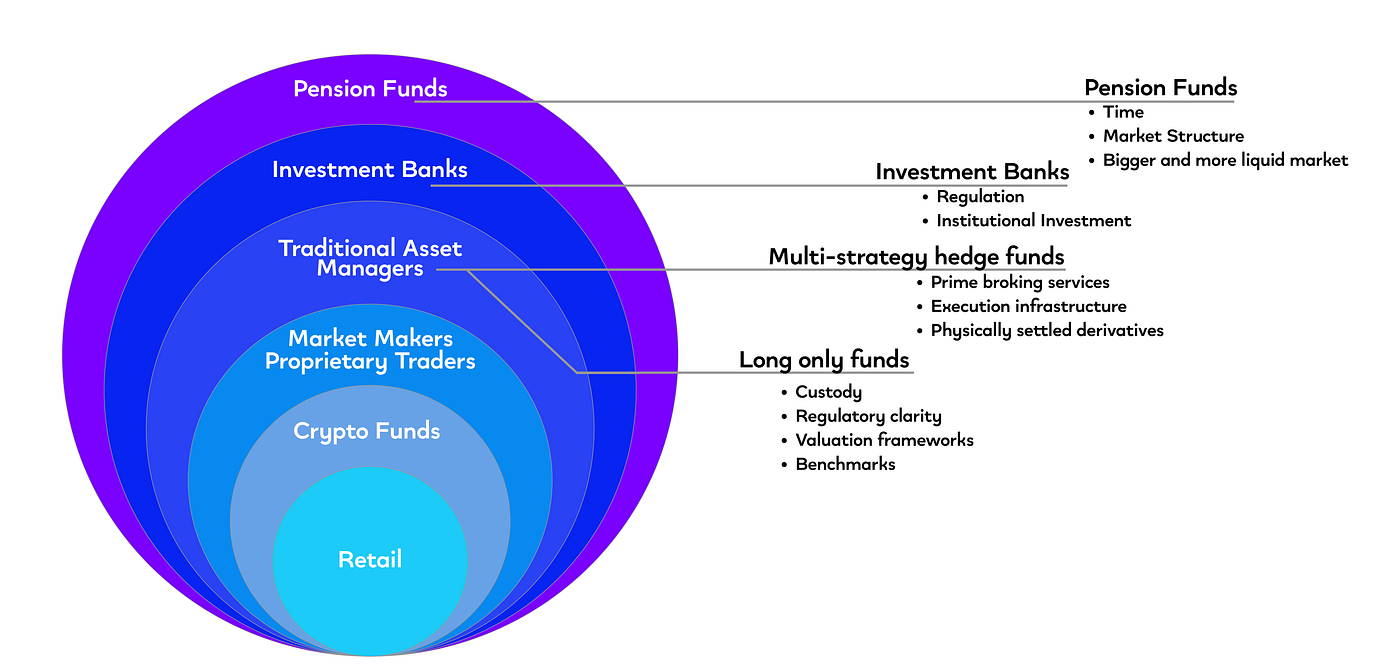
Institutional investor layers from retail to pension fundss – (source: Medium)
2. Compliant Trading Algorithms
Algorithms are powerful tools for market-making, but their purpose defines whether they are compliant or manipulative.
- Legitimate strategies: Time-Weighted Average Price (TWAP), Volume-Weighted Average Price (VWAP), and Pegged Orders help smooth out trades, minimize volatility, and provide steady liquidity flow.
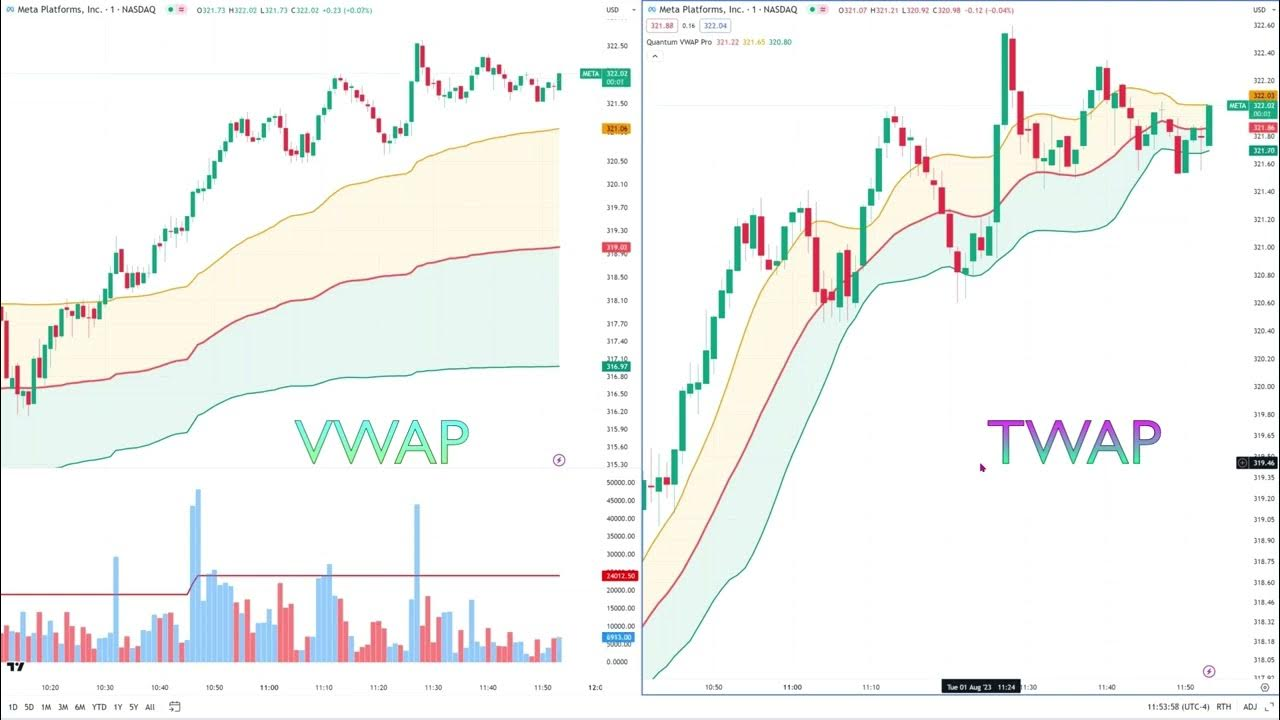
The chart below illustrates how VWAP and TWAP function differently when applied to trading execution – source
- Regulatory acceptance: Such algorithms are widely used in equities and FX markets, meaning they already fall within familiar regulatory norms.
- Key distinction: Compliant bots react to real market demand (supply/demand balancing), whereas manipulative bots fabricate activity to mislead traders.
Implementation tip: Maintain audit logs of algorithm decisions and parameters. This shows regulators that the system was designed for liquidity provision, not deception.
3. Transparent Reporting: Turning Compliance into Competitive Advantage
Transparency is no longer optional; it is a market differentiator.
- Investor confidence: Publishing liquidity reports reassures investors that volume is genuine and not inflated. Institutional capital, in particular, requires documented proof before engaging.
- Regulatory defense: Detailed records of trades, order book interventions, and liquidity partner contracts provide evidence of good faith if questioned.
- Reputation signal: Exchanges are increasingly evaluating whether projects disclose market-making relationships. Transparency can be the deciding factor for token listing on tier-1 platforms.
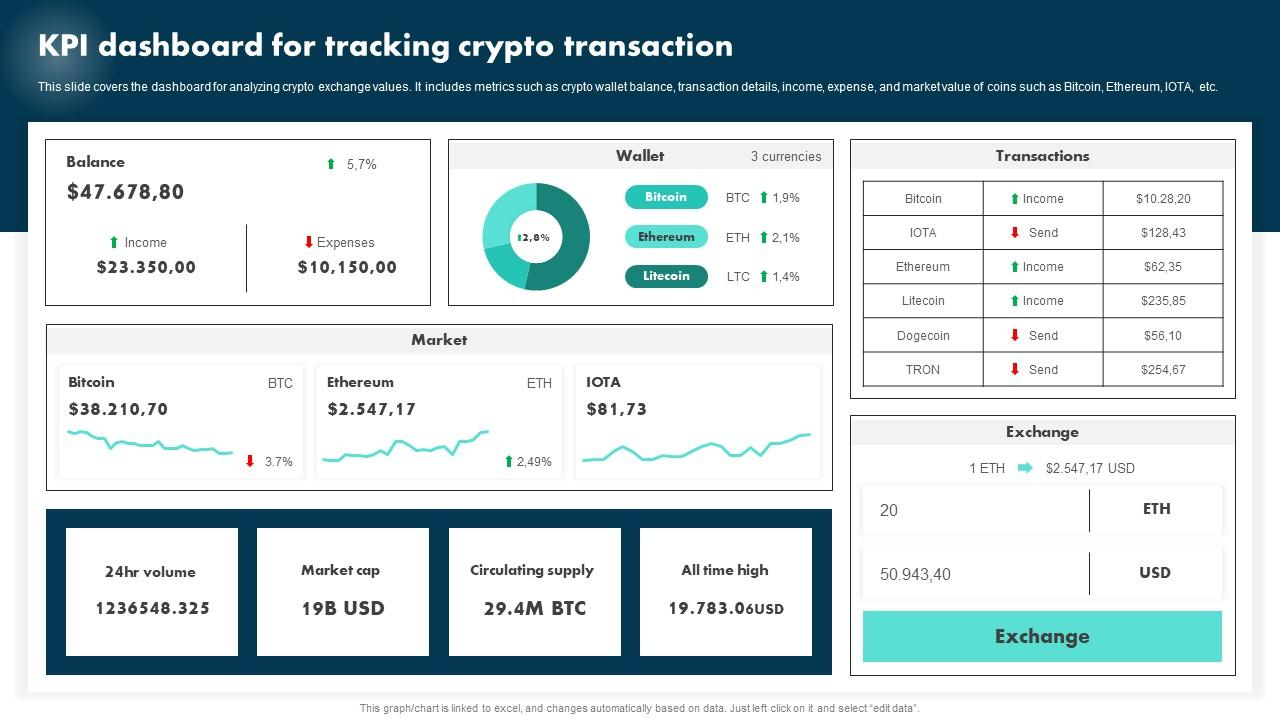
Transparent compliance dashboards strengthen credibility with regulators and exchanges by proving audit readiness and governance maturity – source
Best practice: Issue quarterly liquidity and compliance reports, similar to financial disclosures. Position it as part of investor relations, not just legal housekeeping.
4. Alternative Liquidity Strategies
Projects often overlook that organic incentives can be as effective as market-making in driving sustainable activity.
- Staking incentives: Encouraging holders to lock tokens reduces circulating supply, stabilizes price floors, and naturally creates liquidity pressure.
- Liquidity mining programs: Rewarding users for providing token pairs on decentralized exchanges generates organic trade flows. Unlike artificial volume, this creates real economic utility.
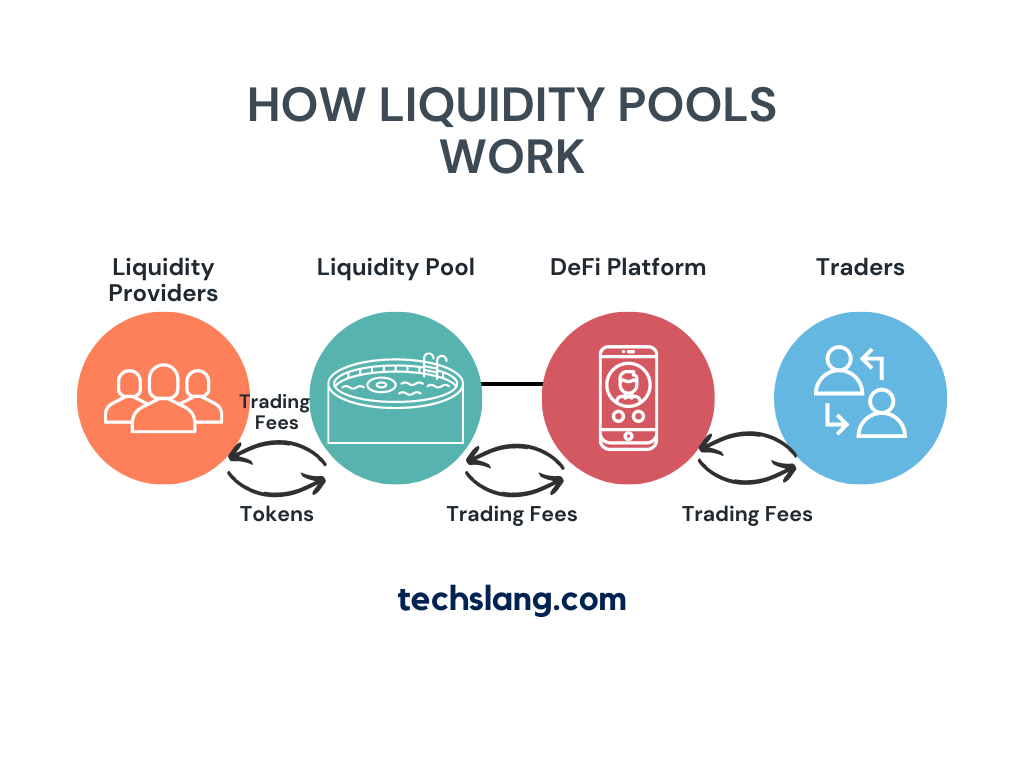
Liquidity pool mechanism showing providers, pools, DeFi platforms, and traders (Source: Techslang)
- Cross-exchange partnerships: Enabling arbitrage opportunities across multiple venues (CEX + DEX) attracts professional traders who generate real volume without manipulation.
Strategic tip: Incentives should be structured with sustainability in mind. Overly aggressive rewards attract short-term speculators, while tiered or time-bound rewards foster long-term liquidity providers.
5. Long-Term Benefits
All of these compliant approaches share one characteristic: they take time. Unlike pump-and-dump tactics, which inflate volume overnight, compliant strategies compound value:
- They attract long-term participants such as institutional investors, professional market makers, and dedicated community members.
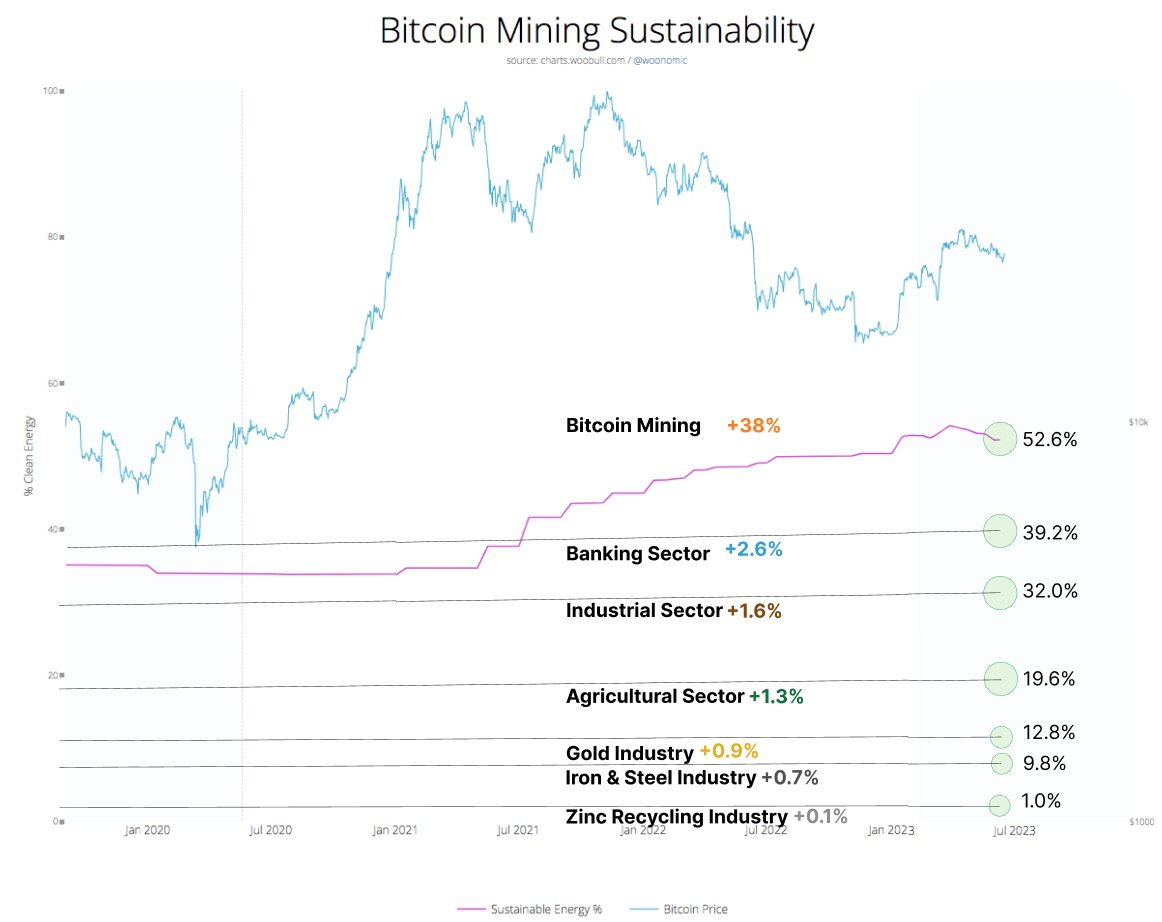
Bitcoin mining sustainability trend compared with other industries, showing 52.6% clean energy adoption vs banking, industrial, and gold sectors (Source: Woobull/Glassnode)
- They protect against delisting risks, since exchanges view compliance as evidence of project stability.
- They future-proof projects in a market that is moving rapidly toward institutionalization and stricter regulation.
These approaches require patience but deliver quality results. They attract long-term holders and professional traders rather than short-term speculators, strengthening both liquidity and community resilience.
Essential Compliance Framework for Successful Token Listing
Regulatory preparedness begins with comprehensive KYC/AML infrastructure that meets international standards. Projects must implement robust identity verification, transaction monitoring, and suspicious activity reporting capabilities before engaging in any market-making activities. This foundation protects against inadvertent compliance violations and demonstrates regulatory sophistication to potential partners.
Trading practices must avoid any appearance of market manipulation. This means eliminating fake orders, avoiding coordinated buying campaigns, and ensuring all trading activity serves legitimate economic purposes. Projects should establish clear policies prohibiting employees, advisors, and partners from engaging in manipulative trading and implement monitoring systems to detect potential violations.
Full disclosure of market-making relationships is essential for maintaining transparency. Projects should clearly communicate when they engage professional market makers, explain the scope of these relationships, and ensure all relevant parties understand their market support strategies. This transparency protects against accusations of hidden manipulation while building trust with sophisticated stakeholders.
Exchange selection significantly impacts compliance outcomes. Projects should prioritize platforms with robust surveillance systems, established regulatory relationships, and proven track records of maintaining market integrity. While smaller exchanges might offer easier listing opportunities, tier-1 platforms provide the regulatory protection and institutional credibility necessary for long-term success.
Documentation and audit trails create essential protection against regulatory challenges. Projects should maintain detailed records of all trading decisions, market-making strategies, and compliance procedures. Regular compliance audits by qualified professionals help identify potential issues before they become serious problems and demonstrate commitment to regulatory adherence.
Risk management protocols must address both financial and regulatory exposure. This includes position limits that prevent excessive market impact, trading halt procedures for unusual market conditions, and clear escalation processes when compliance concerns arise. Professional market-making relationships should include contractual protections that limit project liability for partner actions.
Conclusion
Market-making compliance represents far more than regulatory box-checking, it’s the strategic foundation for sustainable volume growth and successful token listing. Projects that embrace compliant practices from inception avoid the regulatory risks that destroy value and reputation while building the credibility necessary for institutional adoption.
The cryptocurrency market’s evolution toward greater regulation and institutional participation rewards projects that demonstrate sophisticated compliance capabilities. These organizations attract quality investors, secure partnerships with reputable service providers, and achieve sustainable growth that withstands market volatility and regulatory scrutiny.
Smart blockchain projects recognize that compliance excellence differentiates them in an increasingly crowded market. While competitors pursue dangerous shortcuts that threaten long-term viability, compliant projects build sustainable competitive advantages that compound over time.
For projects serious about achieving sustainable liquidity growth and successful token listing, professional guidance ensures both regulatory compliance and strategic optimization. The complexity of global regulatory requirements and evolving market dynamics demands expertise that balances aggressive growth objectives with prudent risk management.
At Twendee Labs, we specialize in guiding blockchain projects through this exact challenge: balancing aggressive liquidity goals with uncompromising compliance standards. For teams determined to scale sustainably and achieve successful token listings, partnering with experts is no longer optional, it is the foundation of survival and growth. Connect with us on Twitter & LinkedIn Page.
Explore more on fulfilling today’s exchange listing requirements: Navigating Exchange Listing Standards in 2025





